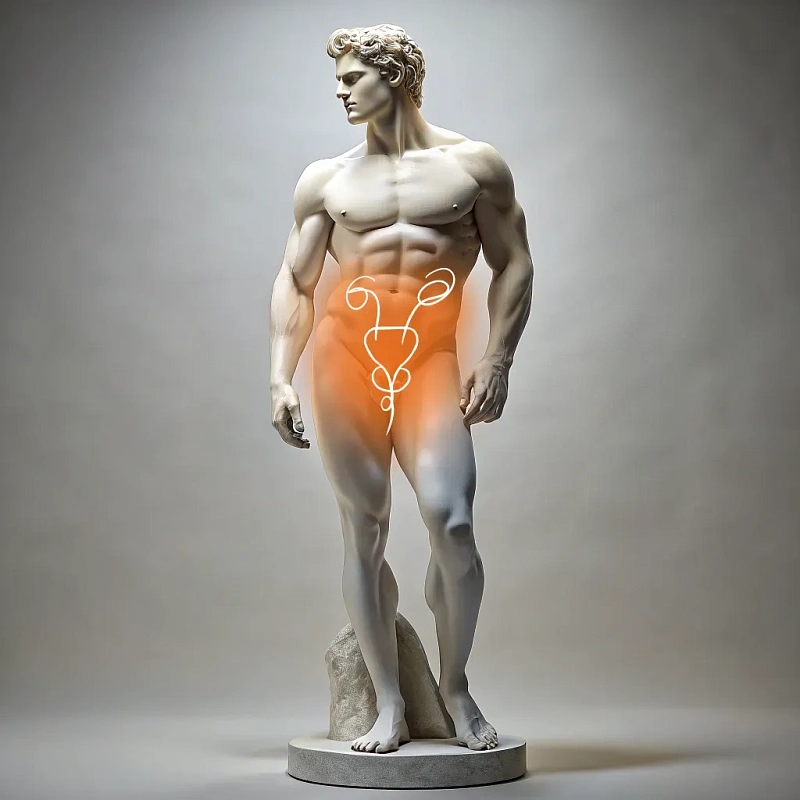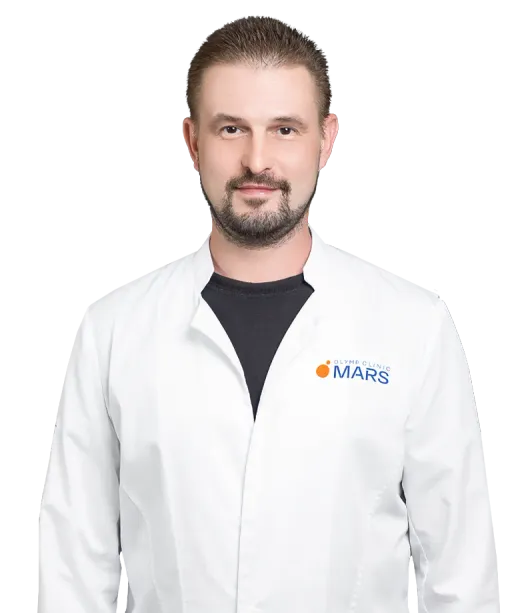Diagnostics and treatment of prostatitis
A comprehensive approach to identifying the causes of prostate inflammation and prescribing individual treatment.

Prostatitis is an inflammation of the prostate gland, which can be caused by 1) infection or 2) pelvic congestion or poor blood circulation. The main symptoms of prostatitis are pelvic pain, difficult or painful urination.
Bacterial prostatitis is treated with antibiotics, which are selected based on the results of a bacteriological culture. In case of chronic prostatitis, treatment may include physiotherapy, prostate massage and medications to improve microcirculation and eliminate congestion.
Urological consultation to take a medical history and perform a palpebral rectal examination. Urinalysis and urine culture. Prostate secretion test. Prostate ultrasound. Some cases include uroflowmetry to assess the pace and amount of urination.
It is recommended to abstain from sexual intercourse 24-48 hours before the examination and maintain genital hygiene. The urologist will ascertain symptoms and medical history during the diagnostics and perform a palpebral rectal examination to assess the prostate gland condition. Blood and urine tests, as well as microscopic and bacteriological examination of the prostate secretion are performed to confirm the diagnosis and determine the causative agent.
In case of bacterial prostatitis, antibiotics are prescribed to eliminate the infection. The urologist may also prescribe physiotherapy procedures to improve blood circulation and accelerate tissue repair. Prostate massage may be prescribed to improve the outflow of secretion, reduce congestion and increase the effectiveness of drug treatment.
In case of acute prostatitis, improvement usually occurs after a few days of the treatment, but it is important to complete the entire course to avoid it becoming chronic. Chronic prostatitis may require a longer recovery, including supportive therapy, regular visits to the urologist and following recommendations to prevent recurrence.
Benefits
An integrated approach
Treatment is aimed at eliminating the symptoms, eliminating the cause of inflammation and preventing relapses.
Effective elimination of symptoms
Adequate therapy allows you to quickly relieve inflammation and improve the patient's quality of life.
Minimizing the risks of complications
Timely treatment reduces the risk of abscess, erectile dysfunction and chronic pain syndrome.
Individual approach
Treatment is selected taking into account the form and stage of prostatitis, as well as the general health of the patient.
Frequently Asked Questions
What are the first signs of prostatitis to look out for?
Is it possible to cure chronic prostatitis?
How does prostatitis affect sexual performance?
How often is it necessary to see a urologist for chronic prostatitis?
Didn't find an answer to your question?
You can describe your problem in detail and ask a question to the doctor. He will answer you and help you find a solution
Specialists
Find a SpecialistUrologist and Ultrasound Diagnostician.
Similar referral activities
Spermatocelectomy
A surgical procedure to remove a cystic mass in the testicular epididymis.
Microsurgical varicocele treatment (Marmar method)
One of the most efficient and safe ways to treat varicocele, particularly when it comes to preserving fertility and minimising the risks of recurrence.
Microsurgical varicocele treatment
Surgical treatment of varicocele. During surgery, the dilated veins of the testicle and the spermatic cord are removed to restore normal blood supply and improve reproductive function.
Minimally invasive ureteral stone removal
An advanced technique aimed at safe and effective removal of ureteral stones with minimal trauma.
Minimally invasive kidney stone removal
An advanced technique aimed at safe and effective removal of kidney stones with minimal trauma.
Circumcision
Circumcision is the surgical removal of the foreskin covering the head of the penis. It may be performed for medical indications, sanitary purposes, or cultural and religious reasons.
How to reach
How to get
From the Belorusskaya metro station of the Zamoskvoretskaya line - exit 4 After exiting the subway, walk through the pedestrian tunnel and climb the stairs. Move towards the railway tracks, go down the stairs immediately after them and walk along the house, then turn right onto 1st Yamskoye Pole Street. At the turn to 3rd Yamsky Pole Street, cross the road at the pedestrian crossing and continue along 1st Yamsky Field Street, after a few buildings on the left you will see Olympus Clinic MARS.
Travel time
9 minutes
Landmark
Olympus Clinic MARS sign
How to get
From the Belorusskaya metro station of the Ring line - exit 2. After exiting the subway, turn left and walk to the pedestrian crossing. Cross the road through two pedestrian crossings and move along the Tverskoy overpass. Go down the stairs immediately after the railway tracks, walk along the house, then turn right onto 1st Yamskoye Pole Street. At the turn to 3rd Yamsky Pole Street, cross the road at the pedestrian crossing and continue along 1st Yamsky Field Street, after a few buildings on the left you will see Olympus Clinic MARS
Travel time
11 minutes
Landmark
Olympus Clinic MARS sign
From the metro station "Tsvetnoy Bulvar"
1 exit to the city, then left to the Garden Ring, at the crossing to the right, crossing the boulevard, one more crossing and at the traffic light to the left. The Olymp Clinic building is located overlooking the Garden Ring to the right of the crossing. Travel time is approximately 9 minutes. Landmark - sign Olymp Clini
From the metro station "Sukharevskaya"
Exit 3 from the metro and 640 meters straight ahead, the clinic will be on the right. Landmark - sign Olymp Clinic
Parking lot map
Exit 3 from the metro and 640 meters straight ahead, the clinic will be on the right. Landmark - sign Olymp Clinic

From Sokol metro station
The last car from the center: follow the signs for Exit 5. From the glass doors to the right and go to the end of the passage. Exit to the city by the steps to the left. After exiting the crossing to the street, go straight along Leningradsky Prospekt to the intersection with Chapaevsky Lane. Next, turn right (onto Chapaevsky Lane) and walk to the Triumph Palace residential complex. Entrance to the territory: through checkpoint No. 1, opposite the Vkusville store, you will need to present your passport. After passing through the checkpoint, go up the stairs to the fountain, opposite it you will see our clinic.
Travel time
10-12 minutes
From the Airport metro station
The first car from the center: follow the Exit 2-3 signs. Turn left out of the glass doors and walk to the end of the passage. After exiting the crossing to the street, go straight along Leningradsky Prospekt to the intersection with Chapaevsky Lane. Next, turn left (onto Chapaevsky Lane) and walk to the Triumph Palace residential complex. Entrance to the territory: through checkpoint No. 1, opposite the Vkusville store, you will need to present your passport. After passing through the checkpoint, go up the stairs to the fountain, opposite it you will see our clinic.
Travel time
12-15 minutes
How to get
Entry to the territory is prohibited, but there are free city parking lots around the Triumph Palace residential complex, where you can easily find a place for your car. Free parking area:




